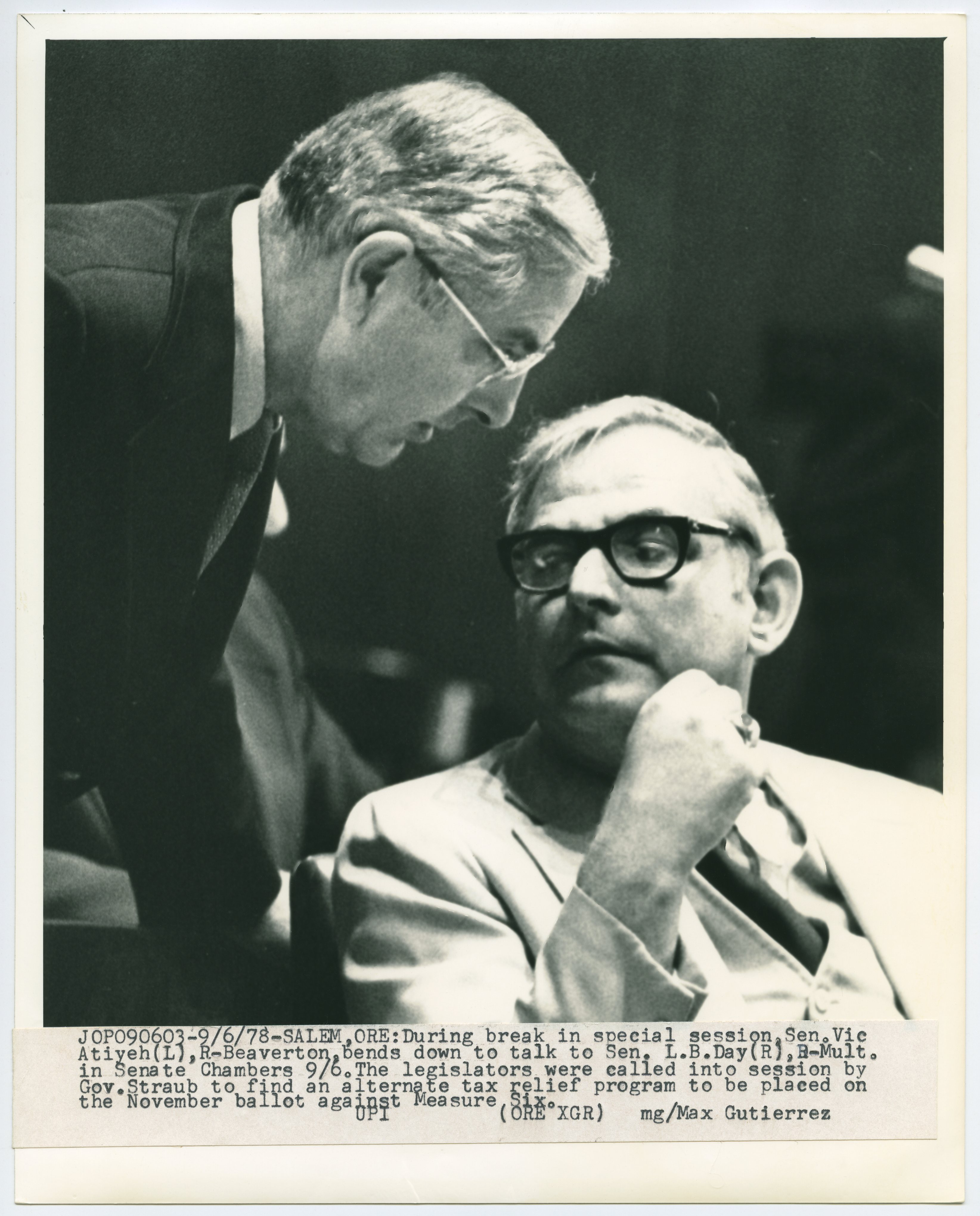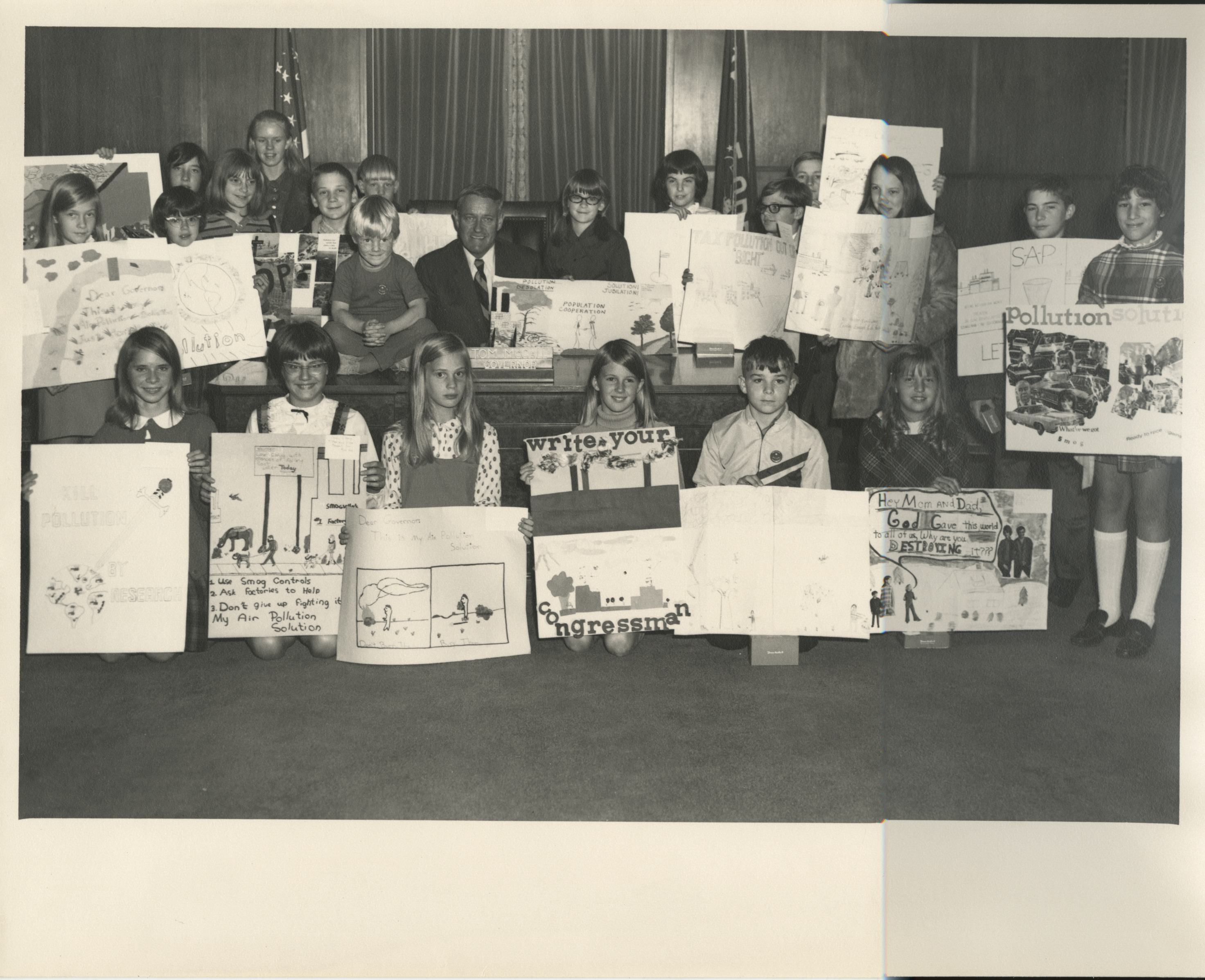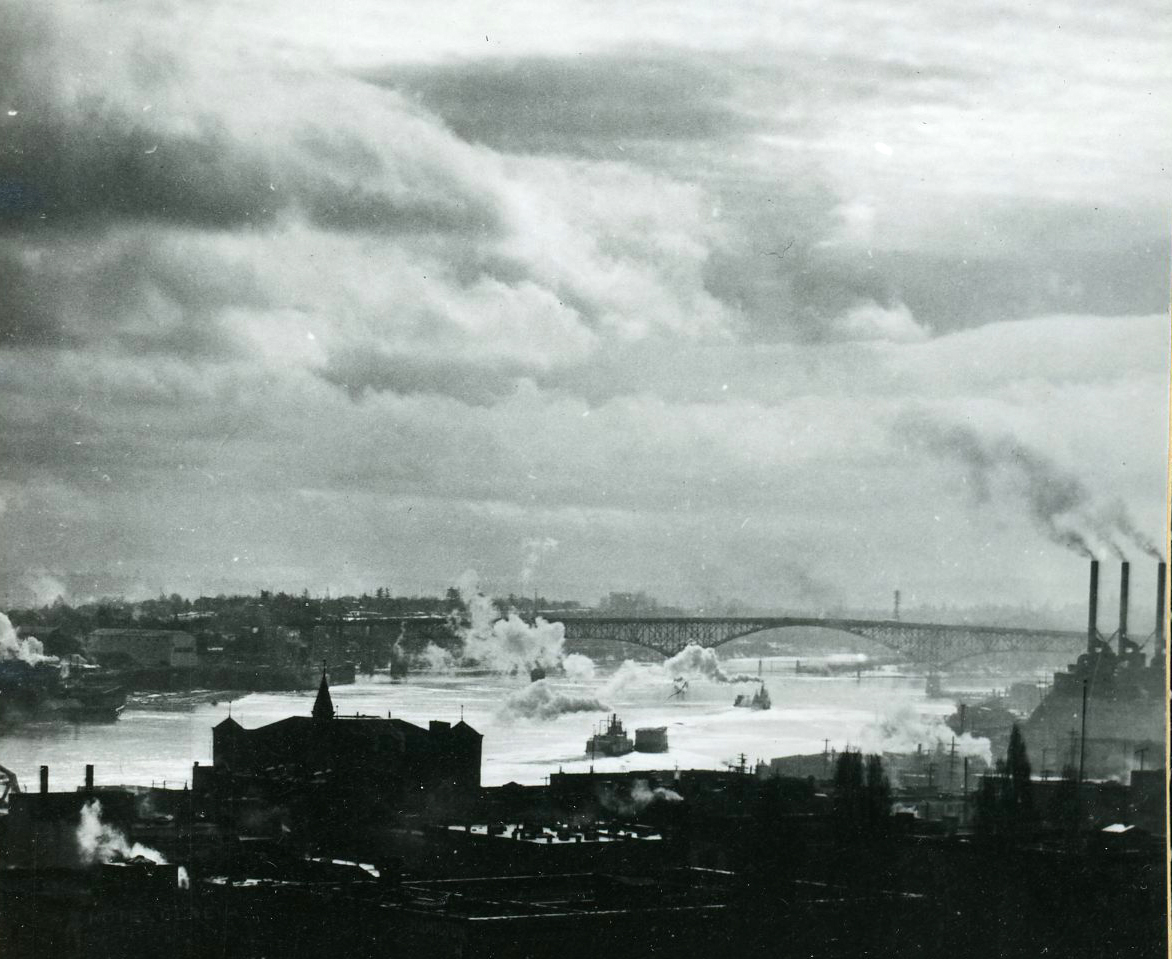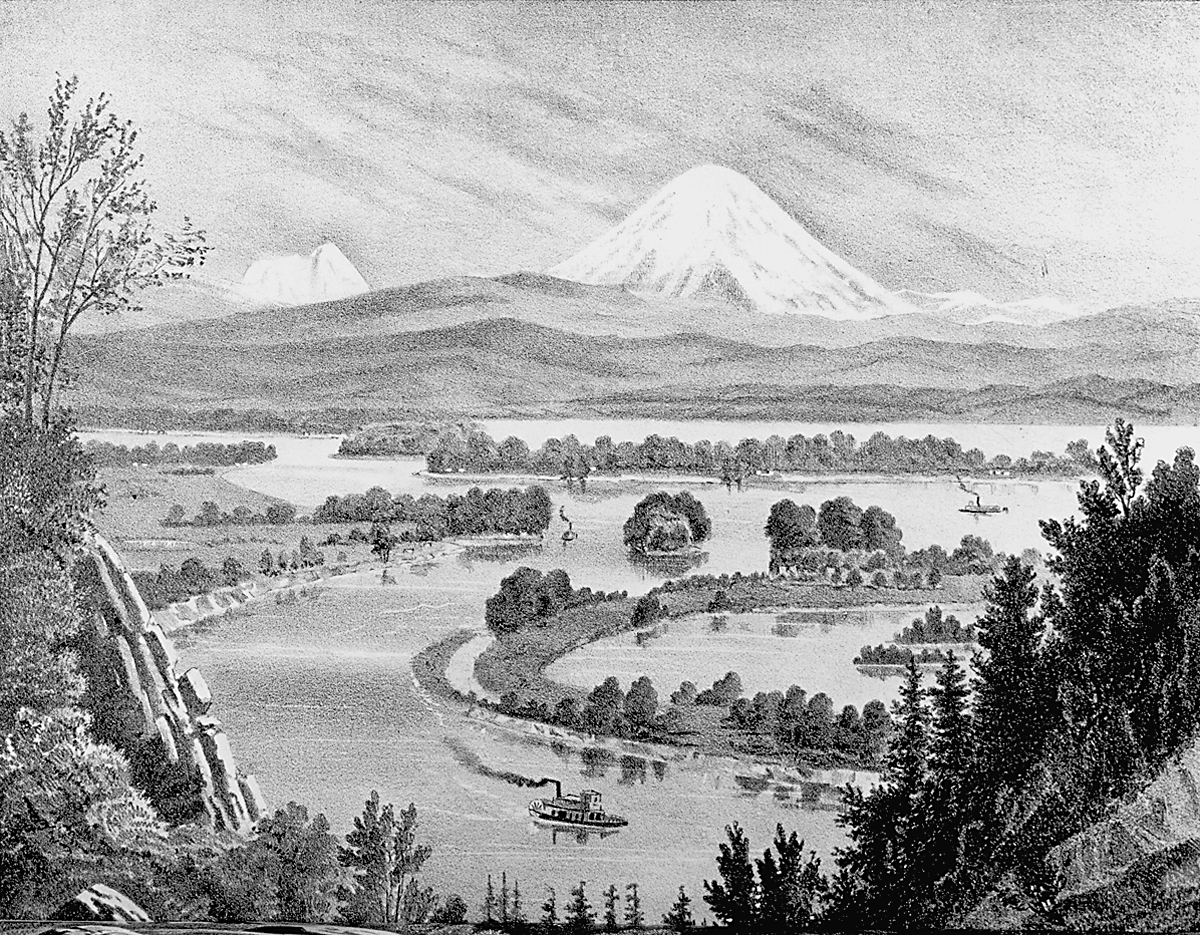L.B. Day was one of a handful of political giants who played leadership roles during an important period in Oregon history, from the mid-1960s until his death in 1986. A large man with a booming voice, his contemporaries characterized him as a doer and a head-knocker and as brusque and blunt. Day was a labor leader, a member of both the Oregon House of Representatives and the Senate, director of Oregon’s Department of Environmental Quality, and chair of the Land Conservation and Development Commission.
Born on February 22, 1932, in Omaha, Nebraska, Day attended the University of Nebraska during 1949-1950 before serving four years in the U.S. Navy. After he was discharged, he moved to Salem, Oregon, where he met Professor Mark O. Hatfield, who persuaded him to enroll at Willamette University. Day graduated with a degree in political science in 1958 and spent 1958-1959 as a post-graduate student at the Law School there. Beginning in 1956, he worked as an organizer for the International Brotherhood of Teamsters Local 670, which was based in Marion County. In 1958, he became an officer in the local branch, whose members worked primarily in agricultural production and processing.
Day won a Salem-area seat in the Oregon House of Representatives as a Democrat in 1964 and 1966. He changed his party affiliation to Republican after the 1967 legislative session and won again in 1968. Day wanted to play a more influential role in the legislature, and given that the Republican Party was dominant at the time, he believed he would be more likely to achieve that goal if he switched parties. In line with his agricultural interests, Day introduced a farmland preservation bill during the 1967 session that did not pass, but it inspired an Interim Committee on Agriculture to hold hearings. He was first to testify at the 1968 hearings that led directly to passage of Senate Bill 10 in 1969, which aimed to prevent sprawling land development from urbanizing productive farmland. SB 10, in turn, led directly to the enactment of a statewide land-use planning bill, Senate Bill 100, during the 1973 session, which greatly strengthened that effort.
Between 1970 and 1972, Day served as northwest regional director for the U.S. Department of the Interior, and he was Governor Tom McCall’s choice to direct the Oregon Department of Environmental Quality. He returned full time to the Teamsters in early 1973.
When SB 100 was embroiled in conflict in the Oregon Senate during the 1973 session, Day was appointed chair of a stakeholder committee to revise the bill. The compromises crafted under his leadership—primarily changes that diminished the state’s direct role in regulating land use while elevating local government's role—were critical to its passage. Signaling his confidence in Day’s ability to chart a successful path for the Land Conservation and Development Commission (LCDC) established by SB 100, Governor McCall wanted Day as its chair. He held the position until mid-1976.
Day played a critically important role in LCDC’s adoption of the first fifteen statewide land-use planning goals during 1974-1975. Identifying him as a polarizing figure, Governor Robert Straub asked Day to resign amid the turmoil that accompanied the development of four coastal goals in 1976, as well as a looming ballot measure challenge to the entire statewide program. Day was appointed by the Marion County Commission to the Oregon Senate in 1977 to fill a vacant seat, and he won election to the seat in 1978 and 1982.
L.B. Day embodied a farmer-labor-environmental alliance. In July 1974, Time magazine named him one of two hundred leaders in the United States aged forty-five and younger, the only labor leader so honored; and in 1972, the Oregon Environmental Council named him its first life member for his contributions to the environment. Day was also vitally interested in increasing jobs and income, not just for workers in the agricultural sector, but throughout the Oregon economy.
On October 24, 1986, during the electoral season, Day died suddenly of a heart attack at a fundraising event for a Republican colleague, leaving behind his wife Cindy and their son. The amphitheater at the Oregon State Fairgrounds, completed in 1987, was named after him in recognition of his service to the state generally, and specifically to the State Fair.
-
![]()
“Senators Atiyeh and Day [right] at a special session,” 1978.
Courtesy Gutierrez, Max, Pacific University Archives Exhibits, PUA_MS96_1674
-
![]()
"GOP Again Controls Oregon House," Oregonian, Nov. 10, 1966.
Courtesy Portland Oregonian
-
![]()
L.B. Day in the Sunday Oregonian, June 14, 1987.
Courtesy Portland Oregonian
-
![]()
"Rep. Day to Resign Seat for Federal Appointment," Oregonian, Feb. 12, 1970.
Courtesy Portland Oregonian
Related Entries
-
![Department of Environmental Quality]()
Department of Environmental Quality
The Oregon Department of Environmental Quality (DEQ) administers and en…
-
![Pollution in Paradise (documentary film)]()
Pollution in Paradise (documentary film)
KGW-TV aired Tom McCall’s one-hour documentary Pollution in Paradise on…
-
![Senate Bill 10]()
Senate Bill 10
The enactment of Senate Bill 10 in 1969 was a crucial step on the path …
-
![Senate Bill 100]()
Senate Bill 100
Signed into law on May 29, 1973, Oregon Senate Bill 100 created an inst…
-
![Thomas William Lawson McCall (1913-1983)]()
Thomas William Lawson McCall (1913-1983)
Tom McCall, more than any leader of his era, shaped the identity of mod…
-
Willamette River
The Willamette River and its extensive drainage basin lie in the greate…
Map This on the Oregon History WayFinder
The Oregon History Wayfinder is an interactive map that identifies significant places, people, and events in Oregon history.
Further Reading
Adler, Sy. Oregon Plans: The Making of an Unquiet Land-Use Revolution. Corvallis: Oregon State University Press, 2012.
Kiesling, Phil. "L. B. Day's Political Passages." Willamette Week, May 9, 1979, pp. 1, 10-11.
Walth, Brent. Fire at Eden’s Gate: Tom McCall and the Oregon Story. Portland: Oregon Historical Society Press, 1994.










